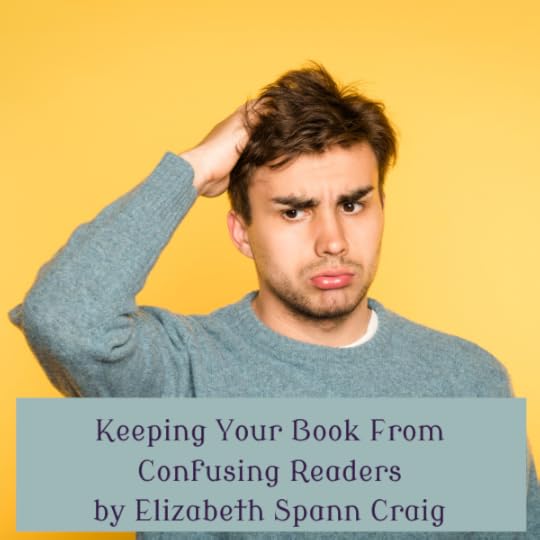Keeping Your Book From Confusing Readers
by Elizabeth S. Craig, @elizabethspanncraig.com
Nothing kills reader enjoyment faster than confusion. We lose readers when readers have to stop and figure out who’s talking, where they are, or what just happened. The good news is that most confusion comes from easily fixable problems that you can catch during revision.
Make It Clear Who’s SpeakingDialogue confusion frustrates readers more than almost anything else. When you have more than two people in a scene, use names or dialogue tags regularly instead of assuming readers will keep track. It’s one of those things I find irritating as a reader, myself: backtracking to figure out a dialogue thread is annoying. Even when the conversation seems obvious to you as the writer, readers need more guidance than you think. A simple “Sarah said” every few exchanges can really help.
Ground Readers in Time and PlaceReaders need to know where they are and when things are happening, especially at the beginning of new scenes or chapters. You don’t need elaborate descriptions, just enough context so readers aren’t floating in space trying to figure out the setting. If your character moves from the kitchen to the garage, mention it. If three days have passed since the last scene, let readers know. These small transitions keep everyone oriented and prevent that disorienting feeling of being lost in your story.
Introduce Characters ClearlyWhen you bring in new characters, give readers something to hang onto—a name, a role, or a relationship to someone they already know. “The woman in the red coat” might work once, but if she’s important, give her a name quickly. I try to limit how many new people I introduce in any single scene, because too many unfamiliar names at once overwhelms readers and makes everyone forgettable.
Keep Your Timeline StraightFlashbacks and time jumps can confuse readers if they’re not handled clearly. Make sure transitions between past and present are obvious, either through formatting, clear transition phrases, or chapter breaks. If events happened “three years ago” in chapter two, don’t suddenly refer to them as “five years ago” in chapter eight. Keep a timeline for yourself during revision to catch these inconsistencies before readers do.
Trust Readers, But Don’t Assume They Remember EverythingYou know your story inside and out, but readers are experiencing it for the first time. They might not remember that minor character from fifty pages ago, or the significance of that object mentioned in chapter three. When you bring back important details, give readers a gentle reminder without making them feel stupid. Something like “the key Sarah had found in her grandmother’s jewelry box” works better than just “the key” if it’s been a while.
The goal isn’t to oversimplify your story—it’s to make sure readers can follow along without working harder than they want to.
What’s the most common source of confusion you catch during revision? What bothers you as a reader?
Clear dialogue tags, smooth transitions, and gentle reminders keep readers immersed in your story instead of stopping to figure things out:
Share on X
The post Keeping Your Book From Confusing Readers appeared first on Elizabeth Spann Craig.




